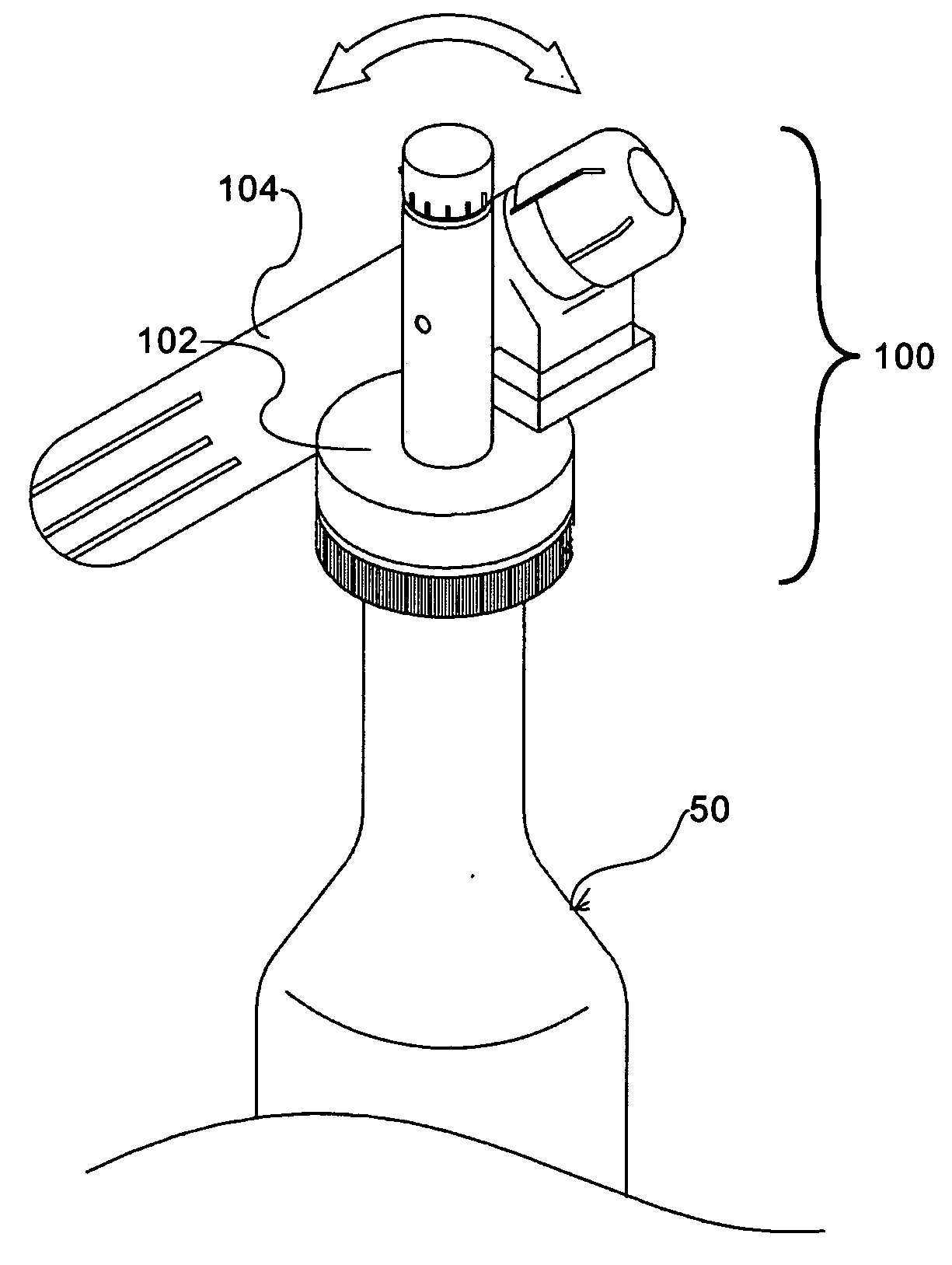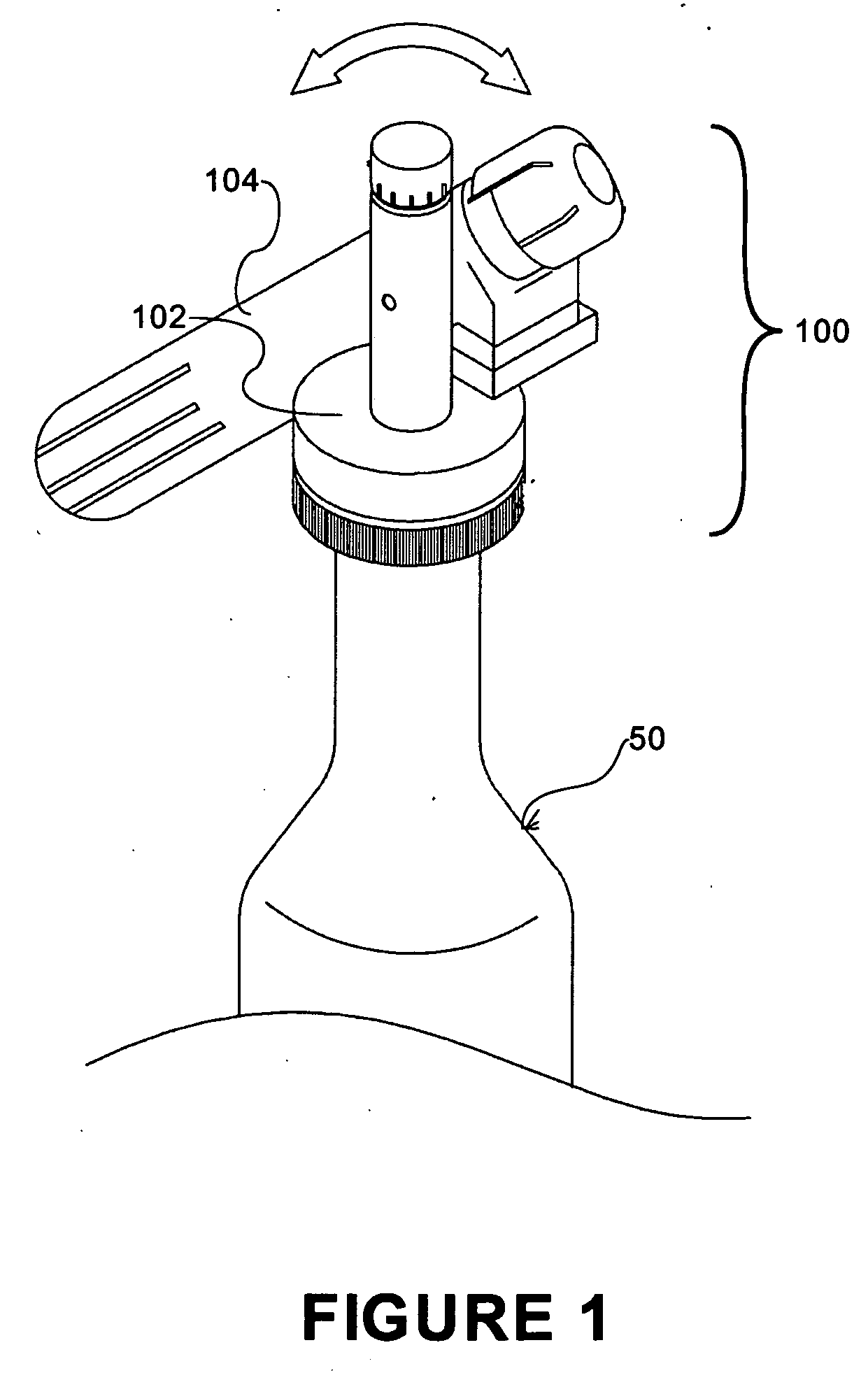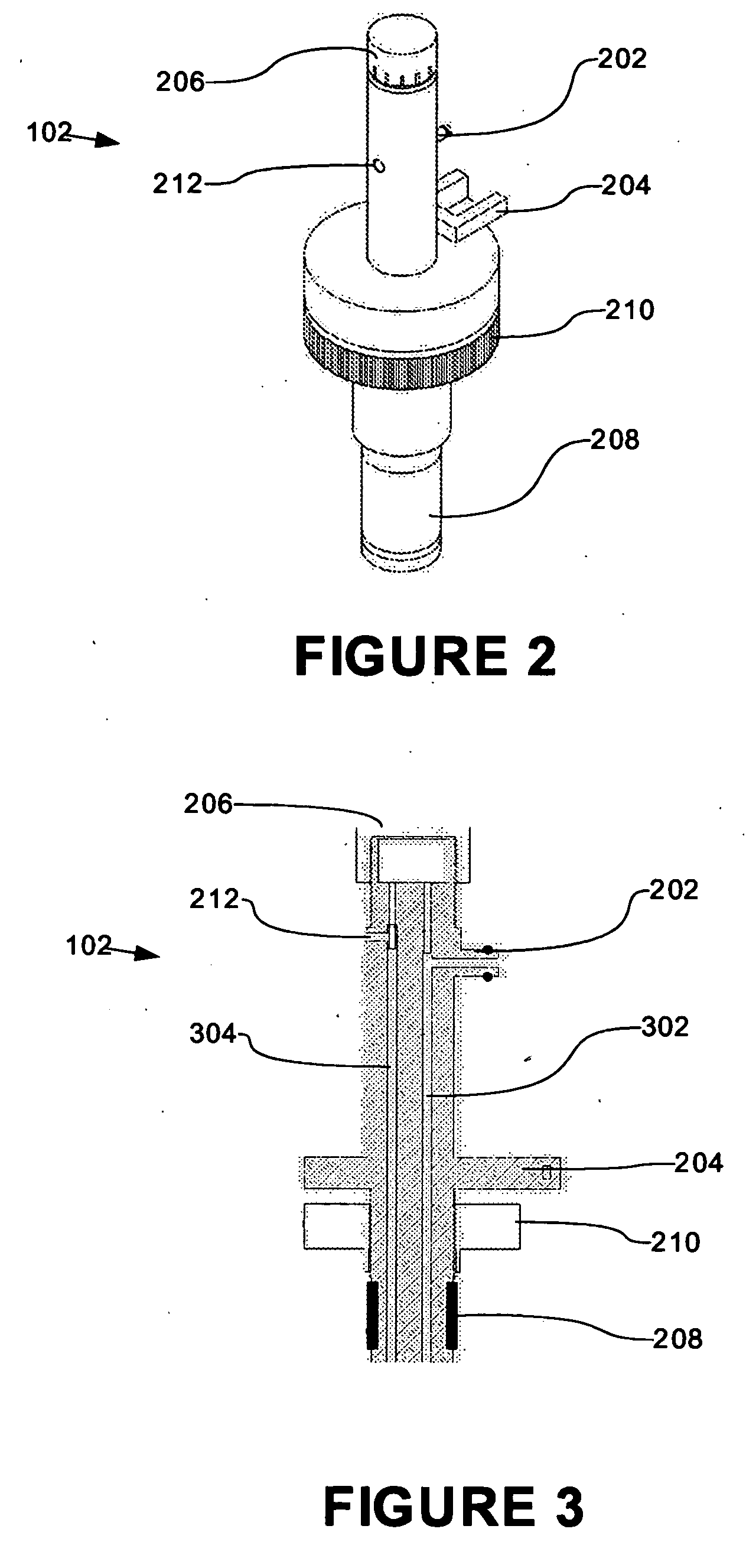Wine preservation system
a technology of wine preservation and vacuum pump, which is applied in the field of wine preservation systems, can solve the problems of significant loss, wine reacting with the surrounding air to develop an unpleasant taste, and the time by which the wine is preserved with a hand-actuated vacuum pump is generally unsatisfactory
- Summary
- Abstract
- Description
- Claims
- Application Information
AI Technical Summary
Benefits of technology
Problems solved by technology
Method used
Image
Examples
Embodiment Construction
[0026] In accordance with the present invention, a wine preservation assembly 100 (FIG. 1) includes a sealing adapter 102 and a gas supply assembly 104. Specifically, sealing adapter 102 provides a sealed conduit through which an inert gas is introduced into a wine bottle 50 from gas supply assembly 104. Gas supply assembly 104 can thereafter be removed from sealing adapter 102 while sealing adapter 102 maintains the seal with wine bottle 50 to seal the inert gas therein.
[0027] Operation of wine preservation assembly 100 is described more completely below but is briefly described here to facilitate appreciation and understanding of the components described below and to facilitate appreciation of the advantages achieved by wine preservation assembly 100. Initially, sealing adapter 102 and gas supply assembly 104 are separate and wine bottle 50 is open and partially filled with wine. A user attaches sealing adapter 102 to wine bottle 50 such that wine bottle 50 is sealed by sealing a...
PUM
| Property | Measurement | Unit |
|---|---|---|
| target pressure | aaaaa | aaaaa |
| pressure | aaaaa | aaaaa |
| pressure | aaaaa | aaaaa |
Abstract
Description
Claims
Application Information
 Login to View More
Login to View More - R&D
- Intellectual Property
- Life Sciences
- Materials
- Tech Scout
- Unparalleled Data Quality
- Higher Quality Content
- 60% Fewer Hallucinations
Browse by: Latest US Patents, China's latest patents, Technical Efficacy Thesaurus, Application Domain, Technology Topic, Popular Technical Reports.
© 2025 PatSnap. All rights reserved.Legal|Privacy policy|Modern Slavery Act Transparency Statement|Sitemap|About US| Contact US: help@patsnap.com



